
Preakness Tradition
Notable Moments In Preakness History
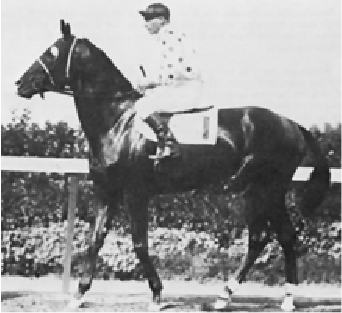
1919 - SIR BARTON
The First Triple Crown Winner
Sir Barton was never hailed a Triple Crown winner because the feat had not been named when he swept the Derby, Preakness and Belmont Stakes in 1919; Triple Crown didn't appear in print until the 1930s. When Sir Barton was purchased he was a 2-year-old at Saratoga who had never run a race. After winning the Derby he was immediately shipped to Pimlico because that year the Maryland Classic was run on Wednesday, just four days after the Derby. Once again he galloped home by four lengths in a display of stamina, then later set an American record in the Belmont.
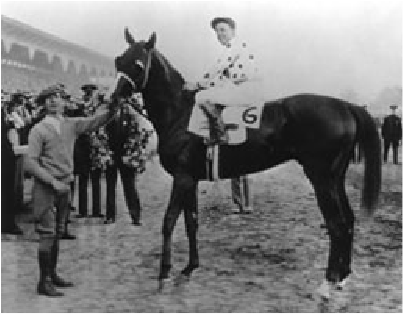
1930 - GALLANT FOX
Second Triple Crown Winner
After capturing the Wood Memorial, Gallant Fox swept the Preakness, Kentucky Derby and Belmont Stakes in that order, making him the only Triple Crown winner to win the Preakness a week before the Derby. Later as a 3-year-old he captured the Dwyer Stakes, Arlington Classic, Saratoga Cup, Lawrence Realization and the Jockey Club Gold Cup. The Fox of Belair was retired for breeding after his 3-year-old campaign, which netted $308,275, a single season record then. Gallant Fox sired the winners of more than ninety races before his death in 1954 at the age of 27.
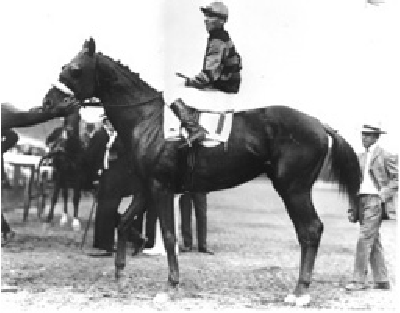
1935 - OMAHA
Third Triple Crown Winner
Omaha was born in Kentucky in 1932, just two years after his sire, Gallant Fox, had won the Triple Crown. The colt, like his sire, was not overly impressive at two but improved with age. After a third in the Wood Memorial, he set off for the Triple Crown. Omaha won the Derby by a length and a half and took the Preakness easily as he won by six lengths. He became the third Triple Crown winner at a length and a half victory in the Belmont. Omaha is the only Triple Crown Winner to Race abroad when Woodward sent him to England at four.
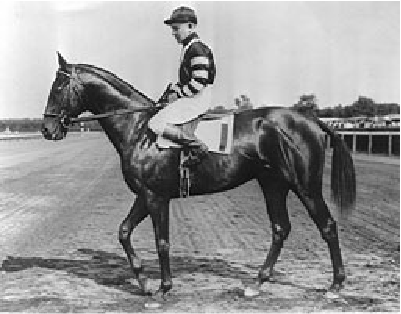
1937 - WAR ADMIRAL
Fourth Triple Crown Winner
War Admiral led the Derby from flag to finish, but Preakness produced one of the most memorable battles when he went had to head with Pompoon from the top of the stretch At the wire, War Admiral won by a head. The Belmont Stakes proved to be War Admirals easiest victory in the Triple Crown despite stumbling at the start resulting in a leg injury that sidelined him until October. War Admiral won 21/26 starts and finished out of the money only once; he and Count Fleet are the only Triple Crown winners to go undefeated during their 3-year-old seasons.
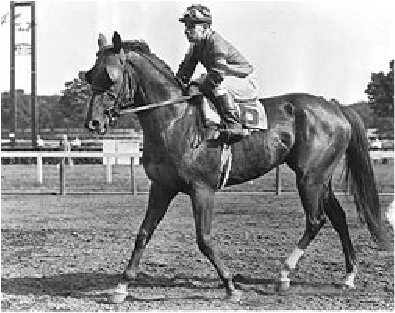
1941 - WHIRLAWAY
Fifth Triple Crown Winner
Once Whirlaways trainer solved his habit of running extremely wide on turns by devising a special blinker just in time for the Kentucky Derby, there was no stopping this colt. Winning at Churchill Downs by eight lengths, Whirlaway made a dramatic stretch run to set a new time record of the mile and a quarter. A week later he came from far back to take the Preakness by five and a half lengths. His rider, Arcaro, described his Preakness experience like riding a tornado. Whirlaway was named Horse of the Year in 1941 and again the following season.
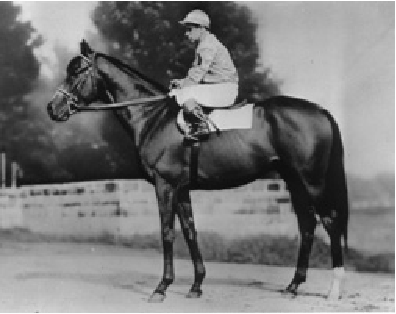
1943 - COUNT FLEET
The Sixth Triple Crown Winner
Winning ten of fifteen starts as a 2-year-old, Count Fleet carried the colors of Mrs. John D. Hertz, wife of the Chicago taxicab executive. Hailed as a successor to Man 0 War after his perfect six for six 3-year-old season, he was forced to train for his 3-year-old campaign at Oaklawn Park during the Florida wartime racing ban. In the Triple Crown, Count Fleet found little opposition. He galloped in the Derby, captured the Preakness with only three challengers by eight lengths, and then taking the Withers, annexed the Triple Crown with a 25-length triumph in the Belmont Stakes.
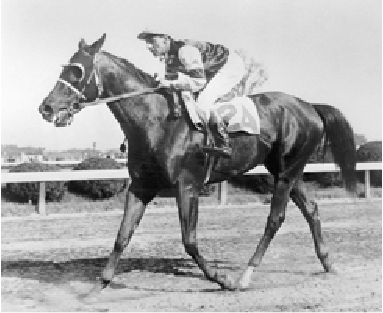
1946 - ASSAULT
The Seventh Triple Crown Winner
Assault had the early misfortune of stepping on the surveyors stakes. Once the hoof healed, it caused him to favor the foot. He appeared crippled and thus, not trainable. Assault was not impressive at two, winning only two races; even after taking the Experimental Handicap and Wood memorial at three, he went off at 81 odds in the Derby. Favored in the Preakness, Assault won by a neck, after holding a four-length advantage with an eighth mile to go. His jockey changed tactics in the Belmont, reserving the colt and charging from behind to win by three lengths.
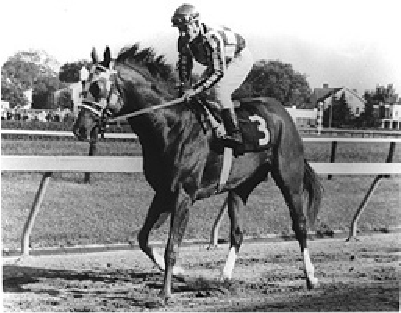
1948 - CITATION
Eighth Triple Crown Winner
Citation was the greatest horse of the 40s; some observers believe he was the most accomplished horse ever to race. Big Cy made his debut in Maryland, winning his first start at Havre de Grace in 1947. Later that year he captured the Pimlico Futurity on his way to an 8 for 9 year at two. As a 3-year-old, Citation went 19 for 20. His only loss occurred at Havre de Grace in a sprint race where he was carried wide by a tiring horse and finished second. The Triple Crown, Belmont and Preakness were hardly a challenge for Citation.
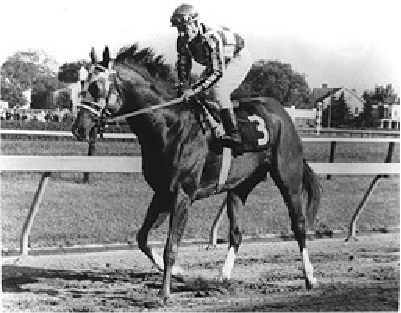
1973 - SECRETARIAT
The Ninth Triple Crown Winner
Before he was nominated for the Triple Crown, Secretariat was the first 2-year-old ever to be voted Horse of the Year. A celebrity even before his Triple Crown heroics, he was syndicated for a record $6,080,000 early in his 3-year-old season. In the Kentucky Derby, he set a record for the mile and a quarter and captured the Preakness with ease with a powerful move from last on the clubhouse turn. In the Belmont Stakes, Secretariat put on an awesome show, winning by 31 lengths to gain the Triple Crown, a prize that had gone unclaimed for a quarter century.
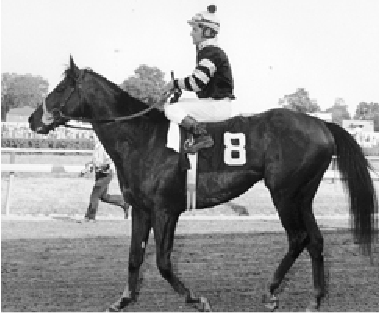
1977 - SEATTLE SLEW
The Tenth Triple Crown Winner
Seattle Slew is the only Thoroughbred in history to capture the Triple Crown with an unbeaten record. After the Triple Crown, he lost only three of seventeen career starts earning $1,208,727 total. He was originally purchased as a gift at the bargain price of $17,500 at a Kentucky yearling auction. Seattle Slew was named the 2-year-old champion and Horse of the Year in 1976 and the top 3-year-old in 1977. His trainer was a mere 37 when he trained him to his 2- and 3-year-old championships. Seattle Slew was retired for breeding in 1979 after being syndicated for $12 million.
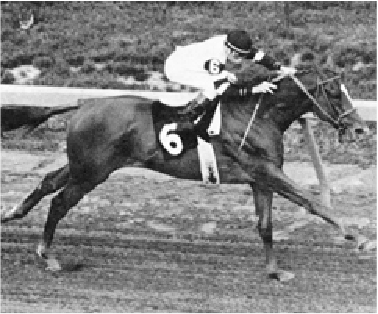
1978 - AFFIRMED
The Eleventh Triple Crown Winner
Affirmed’s combined margin of victory in the Triple Crown was less than two lengths – 1-1/2 lengths in the Derby, a neck in the Preakness and a head in the Belmont. Amazingly, each time it was Alydar chasing him to the wire. Affirmed won 22 of his 29 career starts, earning $2,393,818. The chestnut colt was named Horse of the Year twice as well as 3-year-old champion in 1978. As a 4-year-old he captured seven stakes and beat out Spectacular Bid for Horse of the Year honors. After his 4-year-old campaign he was retired and syndicated for $14.4 million.
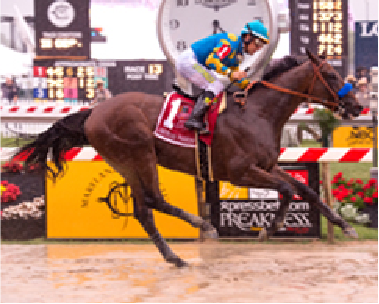
2015- AMERICAN PHAROAH
The Twelfth Triple Crown Winner
While 13 horses tried and failed to sweep the Kentucky Derby, Preakness and Belmont since Affirmed in 1978, American Pharoah ended the 37-year drought in 2015 to become Thoroughbred racing’s 12th Triple Crown winner. Voted champion male his 2-year-old season, he was a hard-fought length winner in the Derby before cruising to a front-running seven-length victory in the Preakness, contested in a heavy rainstorm. He went the distance again in the Belmont, winning by 5 ½ lengths. Though his eight-race win streak was snapped in the Travers, he finished the year becoming the first Triple Crown champion to take the Breeders’ Cup Classic, earning champion 3-year-old male and Horse of the Year honors.
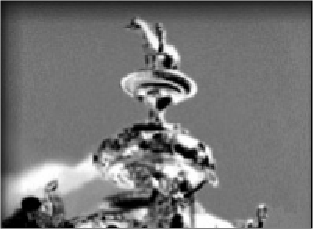
The Woodlawn Vase
Created by Tiffany and Company in 1860 as a trophy for the now defunct Woodlawn Racing Association, the Woodlawn Vase is presented each year to the winning Preakness owner. An assessment in 1983 of $1 million easily makes its silver design the most valuable trophy in American sports. Until 1953, winners were awarded possession of the vase until the following Preakness. That all changed when A. G. Vanderbilt’s Native Dancer won it but his wife did not want to take on the immense responsibility of the vase’s safekeeping. Now the winning owner is awarded a $30,000 sterling replica on a permanent basis while the perpetual is on display at The Baltimore Museum of Art and brought to Pimlico under guard for the annual running of the Preakness.
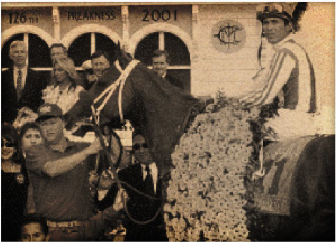
The Black-Eyed Susan Blanket
It remains a long-standing tradition to present the winner of the Preakness a blanket of Black-Eyed Susans, which is draped across the shoulders of the winning horse. Colonel Edward R. Bradley’s Bimelech in 1940 was the first winner to wear the floral blanket of Black-Eyed Susans. Construction of the blanket has varied in method from a loosely intertwined garland of flowers tied with hemp rope, to the current blanket type of presentation. The Black-Eyed Susan blanket is created shortly before Preakness Day. It takes about eight hours for four people to make the blanket. The first step is to cut out a piece of black matting and a piece of green felt into the form of a blanket. The matting is spread out and Ruscus is placed on top. Two people are assigned the duty of cutting Viking Poms about an inch from the flower and inserting a wire into the stem. The second pair of workers attach each flower through the matting by poking a wire through the flower to secure it into position. This process is repeated 4,000 times until the matting is completely covered. Then the green felt is sewn by hand to the back of the matting so that the wires are protected from touching the horse and so that the blanket will lay softly on the winner’s withers. The blanket is 18 inches wide and 90 inches in length. Upon completion, the center of the daisies are daubed with black lacquer to recreate the appearance of a Black-Eyed Susan. The blanket is then sprayed with water and refrigerated until Preakness Day, when it is delivered to the track, to be worn by the Preakness winner. Black-Eyed Susans, declared the state flower by the Maryland legislature in 1918 and the Preakness flower in 1940, do not bloom until June in Maryland. It is said the Susan’s flower usually has 13 petals, which is taken to symbolize the 13 original colonies, of which Maryland was one. The flower reproduces the state’s black and yellow colors.

The Woodlawn Vase
Created by Tiffany and Company in 1860 as a trophy for the now defunct Woodlawn Racing Association, the Woodlawn Vase is presented each year to the winning Preakness owner. An assessment in 1983 of $1 million easily makes its silver design the most valuable trophy in American sports. Until 1953, winners were awarded possession of the vase until the following Preakness. That all changed when A. G. Vanderbilt’s Native Dancer won it but his wife did not want to take on the immense responsibility of the vase’s safekeeping. Now the winning owner is awarded a $30,000 sterling replica on a permanent basis while the perpetual is on display at The Baltimore Museum of Art and brought to Pimlico under guard for the annual running of the Preakness.
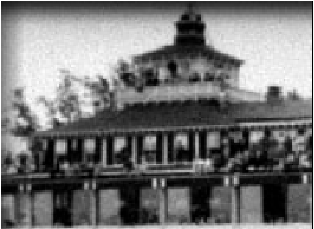
The House of Style
For a fashionable segment of racing fans from 1870 to 1966, there was no other place to be on Preakness day than the sprawling Victorian building known as the Old Clubhouse. Men and women dressed to the height of fashion were served by white-coated Harry M. Stevens waiters, directed by a maitre d’ wearing a tuxedo. Gleaming wood floors lead to numerous sitting rooms, a wrap-around porch and an ornate cupola. Elegance prevailed and the menu followed suit. Standing at the foot of the homestretch, the structure was destroyed in June 1966 – with it went a racing tradition; heirlooms; irreplaceable books, photographs and paintings; genteel customs; and more than nine decades of memories. A token replica of the destroyed building’s cupola now sits in the infield, complete with horse and jockey weathervane.
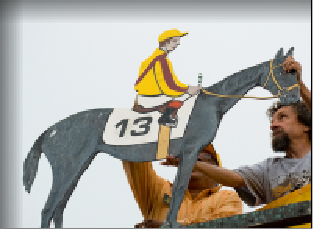
The Painting of the Weather Vane
As soon as the Preakness winner has been declared official, a painter climbs to the top of the replica Old Clubhouse copula to paint the weather vane. He applies the colors of the winner’s silks to the jockey and horse, which will remain there until a new winner is declared in the next year’s Preakness. The practice began in 1909 after the original building’s arrow-shaped weather vane was struck down by lightening. To replace it, the Maryland Jockey Club commissioned an ornamental ironworker to forge a vane in the form of a horse and rider. It was christened that spring by coating it with the colors of the silks of that year’s winner, Effendi, and has continued ever since.
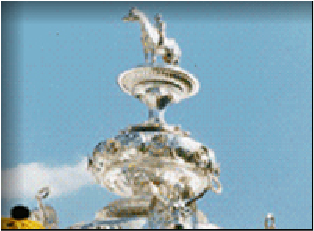
The Woodlawn Vase’s Dirty Secret
Standing 34 inches tall and weighing 29 pounds, 12 ounces, the Woodlawn vase has a colorful history as rich as the classic race at which it is presented. Moving from winner to winner since its creation in 1860, its passage was put to an abrupt halt with the outbreak of the Civil War. While the war was on, racing was put on hold and the vase had to be kept safe, lest it be discovered and melted into shot. To keep it out of harm’s way it was buried at Woodlawn with others of the Moore family plate and then dug up again for the next competition in 1866.
